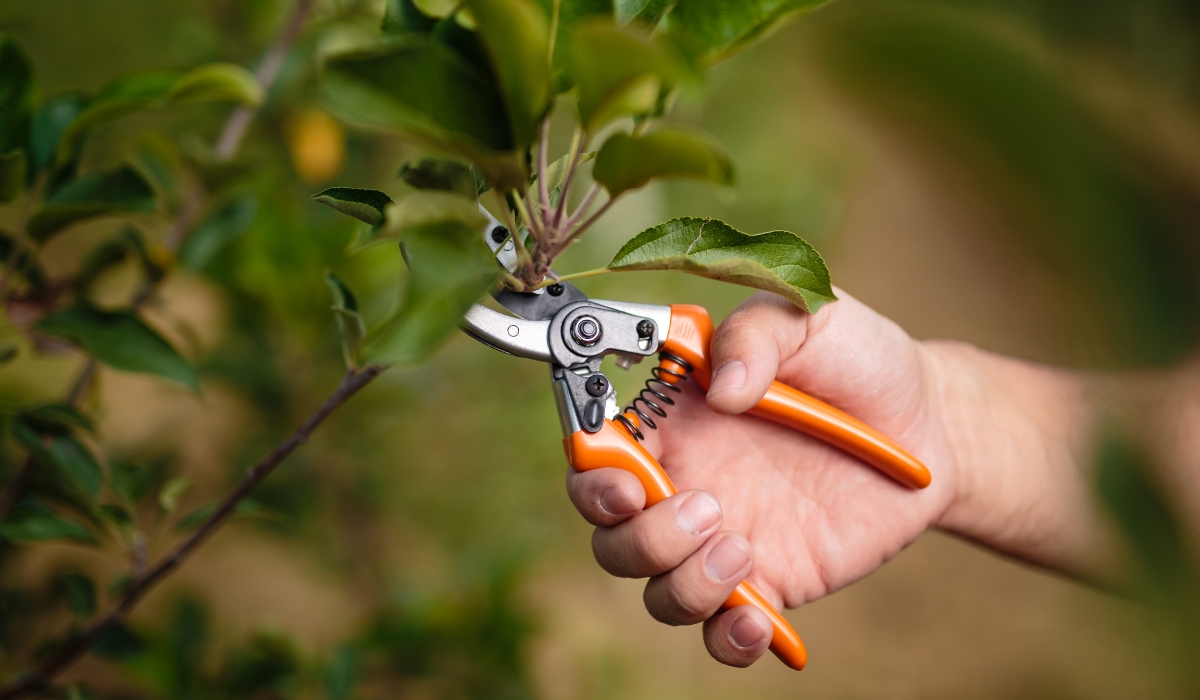Archive for Garden Design
Why Fall is the Best Time to Plant Trees and Shrubs

1. Cooler Temperatures, Less Stress
2. Warm Soil Promotes Root Growth
3. Less Watering Required
4. Fewer Pests and Diseases
5. Steps for Successful Fall Planting
- Choose the Right Plant: Select species and varieties that are well-suited to your region and site conditions.
- Dig Properly: Make the hole twice as wide as the root ball, but no deeper. Loosen the soil on the sides to encourage outward root growth.
- Plant at the Correct Depth: The top of the root ball should be level with the surrounding soil.
- Backfill and Water Well: Replace the soil, gently tamping it down to remove air pockets. Water thoroughly after planting.
- Mulch: Add a 2–3 inch layer of mulch around the base (but not against the trunk) to retain moisture and regulate soil temperature.
6. Plan for Ongoing Care
Trust Your Local Experts
Beyond the Buzz: Creating a Bee-Friendly Garden That’s Also Beautiful
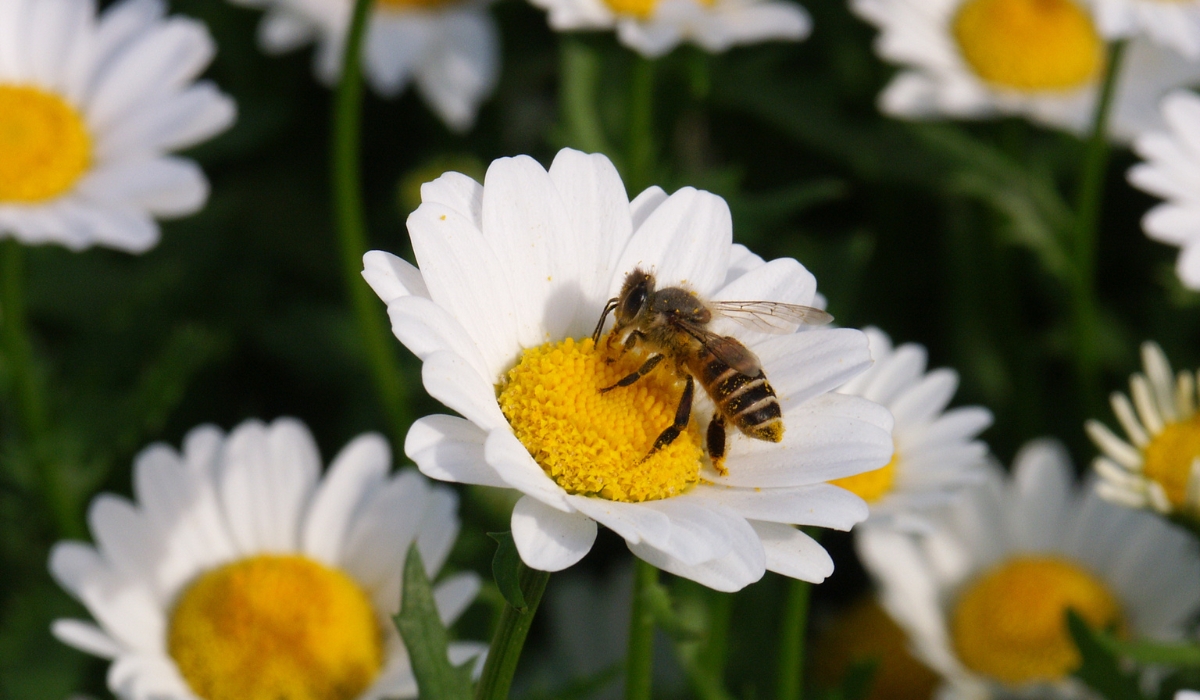
A garden teeming with life is a joy to behold, and the gentle buzzing of bees is a sure sign of a healthy ecosystem. But creating a bee-friendly garden isn’t just about helping our fuzzy, flying friends; it’s also about creating a vibrant, beautiful space for you and your family to enjoy. At DK Landscaping, we believe that you can have a garden that’s both a haven for pollinators and a stunning showcase of natural beauty.
Why Welcome Bees?
Bees are essential pollinators, responsible for much of the food we eat and the flowers we enjoy. By creating a bee-friendly garden, you are:
- Supporting Local Ecosystems: A healthy bee population is vital for the pollination of local plants, helping to maintain biodiversity in our community.
- Boosting Your Garden’s Health: More bees mean better pollination for your flowers and vegetable gardens, leading to more vibrant blooms and a more bountiful harvest.
- Creating a More Engaging Outdoor Space: A garden full of life is a garden full of interest. Watching bees flit from flower to flower is a simple pleasure that connects us with the natural world.
Designing Your Bee-Friendly Oasis
Creating a garden that bees will love is easier than you might think. Here are a few key principles to get you started:
- Plant in Patches: Bees are more attracted to large clusters of the same type of flower. Planting in patches of at least one square yard will make it easier for them to find and forage.
- Choose a Variety of Flowers: Different bees are active at different times of the year, so it’s important to have a variety of flowers that will bloom from early spring to late fall. This will provide a continuous source of food for our pollinating pals.
- Think in Color: Bees are most attracted to blue, purple, yellow, and white flowers. Incorporating these colors into your garden design is a sure way to catch their eye.
- Provide a Water Source: Bees need water to drink, but they can easily drown in open water. A shallow dish filled with pebbles or marbles and a small amount of water will give them a safe place to land and rehydrate.
Bee-utiful Plant Choices
Here are a few of our favorite bee-friendly plants that will also add a splash of color and beauty to your garden:
- Lavender: This fragrant herb is a bee magnet and its beautiful purple spikes will add a touch of elegance to any garden.
- Salvia: With a wide variety of colors and sizes, there’s a salvia for every garden. Their long-lasting blooms will keep the bees coming back for more.
- Sunflowers: These cheerful giants are not only a favorite of bees, but they also provide a tasty treat for birds and other wildlife.
- California Poppies: As our state flower, this vibrant orange beauty is a natural choice for any California garden and a favorite of local bees.
Ready to create a garden that’s buzzing with life? The team at DK Landscaping is here to help. We can design and install a beautiful, bee-friendly garden that you’ll love for years to come. Contact us today to learn more!
Beat the Heat: Smart Watering Strategies for Your May Landscape
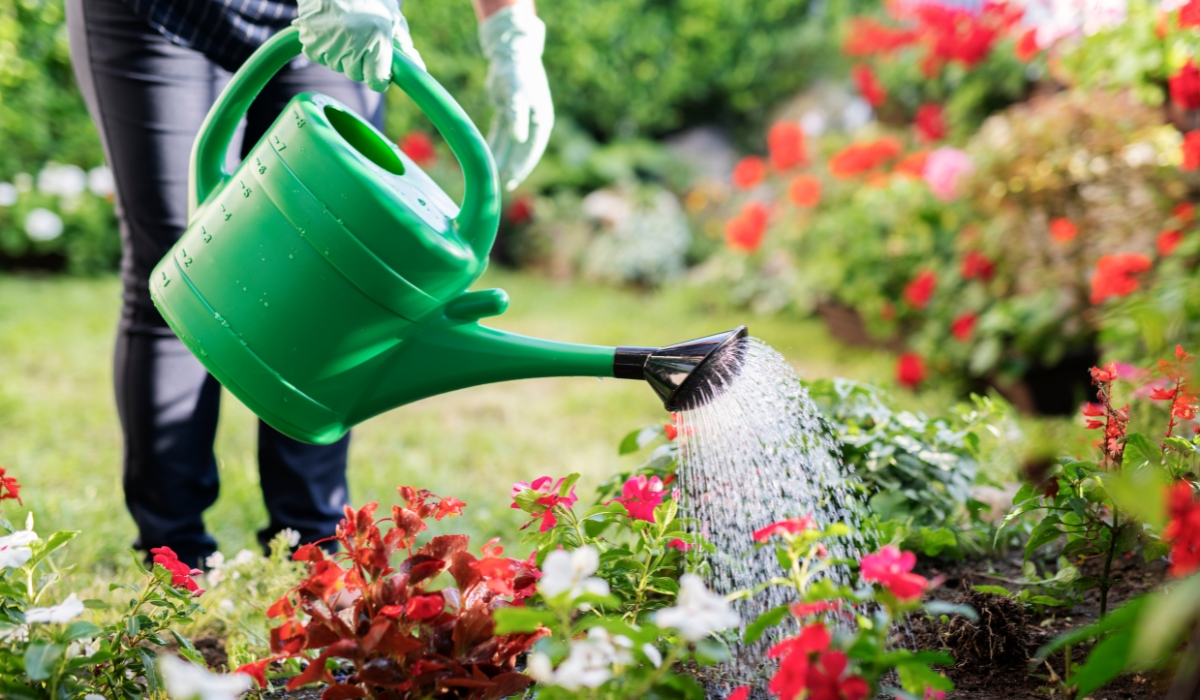
As May arrives in California, so do the steadily rising temperatures. While we all love the sunshine, our gardens start to feel the heat, making smart watering more crucial than ever. At DK Landscaping, we’re committed to helping you maintain a healthy, vibrant landscape while conserving our precious water resources. Here’s how to water smarter, not harder, this May.
The Golden Rule: Water Deeply and Infrequently
Instead of frequent, shallow watering, train your plants to develop deep root systems by watering deeply but less often. This encourages roots to reach further down for moisture, making your plants more resilient to drought and heat stress. For most established trees and shrubs, aim for once a week, or even less for drought-tolerant natives, ensuring the water penetrates at least 18 inches into the soil.
Precision Matters: Embrace Drip Irrigation
If you haven’t already, consider installing or expanding your drip irrigation system. Unlike traditional sprinklers that lose a significant amount of water to evaporation and runoff, drip irrigation delivers water directly to the plant’s root zone, minimizing waste. This targeted approach can improve water use efficiency by 20-50%, fostering healthier plants with deeper root systems. For optimal results, ensure multiple emitters are placed around larger plants to encourage a wider root spread, rather than a single point source.
The Best Time to Water: Timing is Everything
When the sun is high and winds are strong, evaporation rates soar. The best time to water your California landscape in May is in the early morning, ideally between sunset and sunrise, or before 9:00 AM. This allows the water to soak into the soil before the heat of the day causes it to evaporate, and minimizes the risk of fungal issues that can arise from wet foliage overnight in humid conditions. Watering during the middle of the day can lead to a 30% increase in water required due to evaporation.
Harnessing Technology: Smart Controllers
Take the guesswork out of watering with a smart irrigation controller. These innovative devices use local weather data (like temperature, humidity, and rainfall) or even soil moisture sensors to automatically adjust your watering schedule. This means your system will only water when your plants truly need it, preventing overwatering and significant water waste. Many smart controllers are also eligible for local rebates, making them a wise investment for both your wallet and the environment.
Beyond Irrigation: Supplementary Tips
- Mulch, Mulch, Mulch: A 2-3 inch layer of organic mulch around your plants significantly reduces soil moisture evaporation and suppresses weeds that compete for water.
- Group Similar Needs: Place plants with similar water requirements together in “hydrozones” to optimize your irrigation schedule.
- Check for Leaks: Regularly inspect your irrigation system for any leaks or broken sprinkler heads. Even a small leak can waste hundreds of gallons of water.
- Prioritize: If water restrictions are in place, prioritize watering valuable trees and shrubs over annuals or lawns, as they are more difficult and costly to replace.
By implementing these smart watering strategies this May, you’ll not only keep your California landscape looking its best but also contribute to vital water conservation efforts. For personalized advice and professional irrigation solutions, don’t hesitate to reach out to DK Landscaping – we’re here to help your garden flourish responsibly.
Designing Your Dream Spring Garden: Inspiration from DK Landscaping for March

As the landscape awakens in March, it’s the perfect time to not only tend to essential gardening tasks but also to dream and design the spring garden you’ve always envisioned. At DK Landscaping, we believe that thoughtful planning and creative inspiration are key to creating outdoor spaces that bring joy and beauty throughout the season.
This March, let’s explore some inspiring ideas and design considerations to help you craft your dream spring garden, with guidance and inspiration from the experts at DK Landscaping.
Embracing Color and Fragrance:
- Layering Spring Blooms: Create a tapestry of color by layering different spring-blooming plants with varying heights and bloom times. Start with early bloomers like daffodils and tulips, followed by mid-season favorites like irises and peonies, and then late-spring beauties like roses and foxgloves.
- Adding Fragrant Flowers: Engage your senses by incorporating fragrant spring blooms such as lilacs, hyacinths, sweet peas, and stock. Place them near walkways, patios, or windows where their delightful scents can be easily enjoyed.
- Creating Themed Color Palettes: Consider designing specific garden areas with a cohesive color palette. For example, a serene blue and white garden with forget-me-nots, white tulips, and bluebells, or a vibrant warm-toned bed with red poppies, orange calendula, and yellow daffodils.
Designing for Structure and Flow:
- Defining Garden Beds and Borders: Create clear definition between your lawn, pathways, and planting beds using edging materials like stone, brick, or metal. This adds a sense of order and visual appeal to your garden.
- Incorporating Vertical Elements: Add height and visual interest by incorporating vertical elements such as climbing roses on trellises, clematis vines on arbors, or tall flowering spires like delphiniums and snapdragons.
- Creating Pathways and Focal Points: Design inviting pathways that encourage exploration of your garden. Create focal points with striking plants, unique sculptures, or charming water features to draw the eye and add personality.
Considering Functionality and Enjoyment:
- Designing Outdoor Living Spaces: Extend your living space outdoors by creating comfortable seating areas, dining nooks, or even an outdoor kitchen. Consider the placement of these areas in relation to sunlight, shade, and prevailing winds.
- Attracting Pollinators: Design your garden with pollinators in mind by including a variety of nectar-rich flowers that attract bees, butterflies, and hummingbirds. Include native plants whenever possible.
- Creating a Cutting Garden: If you enjoy bringing fresh flowers indoors, dedicate a section of your garden to growing cut flowers like zinnias, cosmos, sunflowers, and dahlias.
Getting Started with Your Spring Garden Design:
- Assess Your Existing Space: Take a good look at your current garden, noting sunlight patterns, soil conditions, and existing plants.
- Gather Inspiration: Browse gardening books, magazines, websites, and social media platforms for ideas and inspiration that resonate with your style and local climate.
- Sketch Your Ideas: Create a rough sketch of your desired garden layout, noting the placement of different plants and features.
- Consult with the Experts: If you need help bringing your spring garden vision to life, the design team at DK Landscaping is here to provide expert advice and create a customized plan for your outdoor space.
Let DK Landscaping help you design and cultivate the spring garden of your dreams this March!
Contact us today for a consultation and let’s bring your vision to full bloom.
Spring Awakening: Essential March Gardening Tasks with DK Landscaping

Ah, March! The air is alive with the promise of new beginnings, the days are noticeably longer, and a vibrant energy returns to our California landscapes. At DK Landscaping, we eagerly anticipate this time of year, as it marks the true awakening of our gardens.
March is a bustling month for gardeners, filled with exciting opportunities to nurture new growth, plant for the season ahead, and revitalize our outdoor spaces after the quieter winter months. Let’s dive into some essential March gardening tasks to ensure your landscape flourishes this spring and beyond, courtesy of your friends at DK Landscaping.
Embracing the Burst of New Growth:
- Fertilizing for Spring Vigor: As plants emerge from dormancy and begin their active growth cycle, they benefit from a boost of nutrients. Apply a balanced, slow-release fertilizer to your lawns, trees, shrubs, and flower beds. Follow the product instructions carefully.
- Spring Pruning (Selective): Now that spring-flowering shrubs like azaleas, rhododendrons, and lilacs have finished their bloom (or are just finishing), it’s the ideal time to prune them. Prune to shape, remove dead or crossing branches, and encourage bushier growth for next year’s floral display. Avoid heavy pruning now, as you could remove developing flower buds.
- Dividing Perennials: Many perennials that have become overcrowded can be divided in early spring. This rejuvenates the plants, encourages more blooms, and allows you to expand your garden or share with friends. Look for plants with multiple crowns that can be easily separated.
Planting for a Colorful Season:
- Planting Warm-Season Vegetables: With the soil warming up, March is the perfect time to start planting many of your favorite warm-season vegetables, such as tomatoes, peppers, eggplants, zucchini, and cucumbers. Be sure to check your local frost dates and protect young plants if unexpected cold snaps occur.
- Direct Sowing Annual Flower Seeds: Sow seeds directly into your garden beds for a continuous display of colorful annual flowers like zinnias, cosmos, marigolds, and sunflowers. Choose varieties that thrive in your local climate and soil conditions.
- Planting Summer-Blooming Bulbs & Tubers: Get a head start on summer beauty by planting bulbs and tubers like gladiolus, dahlias, lilies, and cannas in March.
Lawn Care for a Lush Carpet:
- Lawn Aeration: If your lawn experienced heavy foot traffic or the soil feels compacted, consider aerating it in early March. Aeration improves air circulation, water penetration, and nutrient uptake, leading to a healthier and greener lawn.
- First Mowing & Edging: As your lawn begins to actively grow, it’s time for the first mowing of the season. Set your mower blades to a higher setting for the initial cut and maintain a consistent mowing schedule. Don’t forget to edge along walkways and garden beds for a crisp, clean look.
- Weed Control & Overseeding (if needed): Address any winter weeds that have emerged in your lawn. If your lawn is thin or patchy, early March is a good time to overseed with a suitable grass seed variety.
Ongoing Garden Maintenance:
- Continue Weed Control: Stay vigilant with weed control throughout March. Young weeds are easier to remove than established ones.
- Monitor for Pests & Diseases: As new growth emerges, keep an eye out for any signs of early pest infestations or diseases. Addressing problems promptly can prevent them from spreading.
- Watering as Needed: While spring rains are common, monitor soil moisture levels and water deeply when necessary, especially for newly planted items.
Embrace the Energy of Spring with DK Landscaping:
March is an exciting time to be a gardener in California, and DK Landscaping is here to help you make the most of this vibrant season. Whether you need assistance with spring planting, pruning, lawn care, or designing a stunning spring landscape, our experienced team is ready to bring your vision to life.
Contact DK Landscaping today to discuss your March gardening needs and let us help your garden thrive!
End-of-Year Garden Review & New Beginnings with DK Landscaping

As the year draws to a close, it’s a natural time for reflection and planning. At DK Landscaping, we encourage you to take a moment to review your garden’s journey over the past year and look ahead to exciting new possibilities in the coming year. December offers a unique opportunity to assess what thrived, what struggled, and what changes you might want to make to create your dream California landscape.
Reflecting on Your Garden’s Year
- What Were the Highlights? Think back to the moments of joy your garden brought you. Were there specific plants that bloomed beautifully? Did you enjoy spending more time in a particular area? Identify these successes to build upon them.
- What Were the Challenges? Consider any challenges your garden faced, such as pest problems, water issues, or plants that didn’t perform as expected. Understanding these challenges will help you make informed decisions for the future.
- What Did You Learn? Every season in the garden teaches us something new. Did you discover a new favorite plant? Did you learn a better watering technique? Take note of these lessons.
December: A Time for Assessment and Planning
- Take a Garden Walk: Spend some time walking through your landscape, observing its current state. Note areas that might need attention in the coming months.
- Soil Testing: If you haven’t done so recently, consider performing a soil test. This will give you valuable insights into your soil’s nutrient levels and pH, helping you make informed decisions about fertilization in the spring.
- Sketch Out Ideas: Grab a notebook and sketch out any ideas you have for changes or additions to your landscape in the new year. This could include new planting beds, hardscape features, or changes in plant selections.
- Browse Inspiration: Look through gardening magazines, websites, and social media for inspiration and new ideas that resonate with your style and local climate.
Preparing for a Fresh Start
- Tool Maintenance: Now is a great time to clean, sharpen, and organize your gardening tools. Being prepared with well-maintained equipment will make spring tasks much easier.
- Seed Catalogs & Plant Research: Start browsing seed catalogs and researching new plants you might want to incorporate into your garden next year. Consider factors like sunlight requirements, water needs, and bloom times.
- Plan Your Spring Projects: If you have larger landscaping projects in mind, such as installing a new patio or renovating a planting bed, now is a good time to start planning and potentially get quotes from contractors like DK Landscaping.
Looking Ahead with DK Landscaping
As you plan for the future of your California landscape, remember that DK Landscaping is here to help. Whether you need assistance with design, installation, maintenance, or simply want expert advice, our team is dedicated to bringing your garden dreams to life.
Let us partner with you to make the coming year your garden’s best year yet! Contact DK Landscaping to discuss your landscaping goals for the new year.
Fall in Love with Your Landscape (Again!): November Tips from DK Landscaping
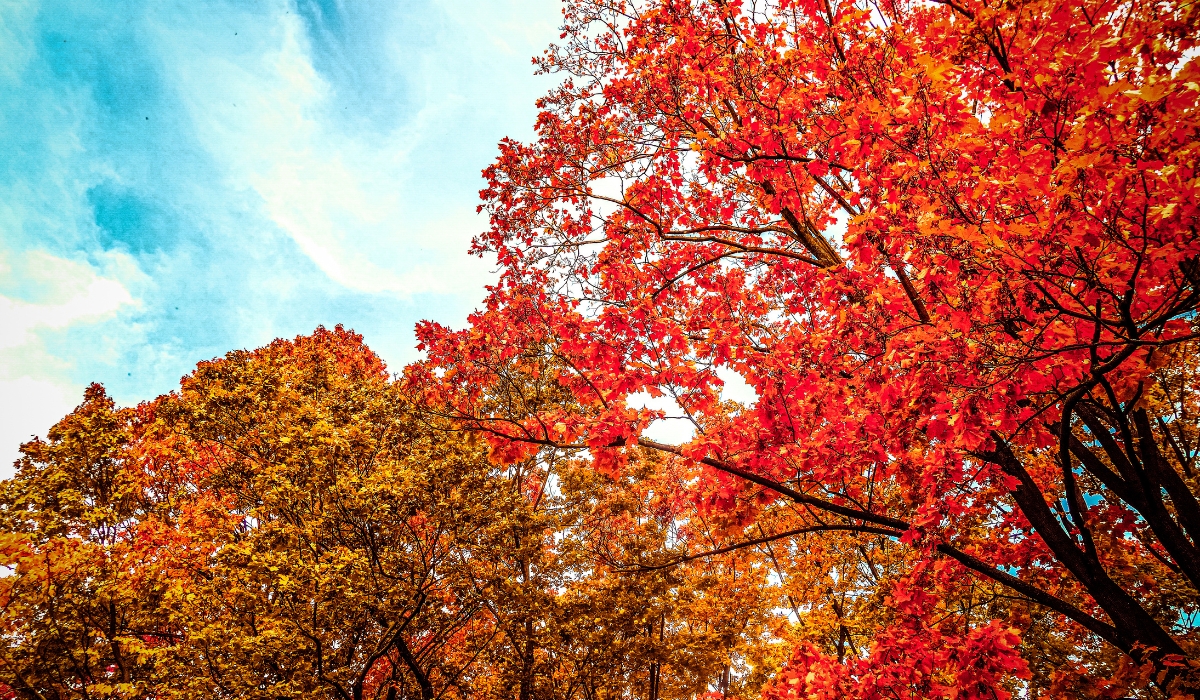
The air is getting crisper, the leaves are putting on their final, fiery show (though maybe with a little less intensity than our East Coast cousins!), and the scent of pumpkin spice is everywhere. Here in California, November marks a beautiful transition in our landscapes. While the scorching summer heat is a distant memory, it’s not quite time to huddle indoors just yet. In fact, November is a prime time to give your garden some much-needed attention and set it up for a thriving spring.
At DK Landscaping, we believe a well-maintained landscape is a year-round source of joy. So, grab a warm beverage, pull on your gardening gloves, and let’s dive into our top tips for making the most of your California garden this November!
Embrace the Post-Summer Refresh:
Summer can be tough on our plants. Now is the perfect time to assess the damage and give them some TLC:
- Deep Clean & Clear Out: Just like you might do a fall cleaning indoors, your garden needs one too! Rake up fallen leaves (they make great compost!), remove dead or diseased plant material, and clear out any lingering weeds that thrived during the warmer months. This helps prevent pests and diseases from overwintering in your garden.
- Pruning Power: Many shrubs and trees benefit from late fall pruning. Removing dead, damaged, or crossing branches improves air circulation and encourages healthy growth in the spring. Not sure where to start? Our experienced team at DK Landscaping can provide expert pruning services to ensure your plants are shaped and cared for correctly.
- Soil Love: After a long growing season, your soil might be depleted. Now is an excellent time to amend your soil with compost or other organic matter. This will improve drainage, aeration, and provide essential nutrients for the months ahead.
Watering Wisdom for Cooler Days:
While the temperatures are dropping, your plants still need water, just not as frequently as in the summer.
- Adjust Your Irrigation: Reduce your watering frequency and duration. Overwatering in cooler weather can lead to root rot. Observe your plants and the soil moisture levels to determine the right schedule.
- Water Deeply and Less Often: When you do water, water deeply to encourage strong root growth.
- Consider Rainfall: Keep an eye on the forecast! If we get a good amount of rain, you can likely skip a watering cycle.
Planting for the Future:
Believe it or not, November is a fantastic time for certain types of planting in California:
- California Natives: Many California native plants thrive when planted in the fall. The cooler, wetter conditions allow their roots to establish before the heat of summer arrives. Consider adding some beautiful and drought-tolerant natives to your landscape.
- Cool-Season Vegetables: If you enjoy fresh produce, now is the time to plant cool-season vegetables like lettuce, spinach, kale, broccoli, and garlic.
- Spring-Blooming Bulbs: Dreaming of vibrant tulips, daffodils, and hyacinths in the spring? Now is the time to plant those bulbs! They need the cool winter months to develop properly.
Don’t Forget the Details:
- Clean Your Tools: Before storing your gardening tools for the winter, clean and sharpen them. This will keep them in good condition and ready for action in the spring.
- Protect Tender Plants: If you have any frost-sensitive plants, consider moving them indoors or providing some form of protection on colder nights.
- Enjoy Your Space! Even with the cooler weather, take some time to appreciate the beauty of your fall landscape. It’s a different kind of beauty, but just as rewarding.
Ready to Give Your Landscape Some November Love?
At DK Landscaping, we’re passionate about helping you create and maintain a beautiful and healthy outdoor space year-round. Whether you need help with fall cleanup, pruning, planting, or simply want some expert advice, our team is here for you.
Contact DK Landscaping today for a consultation and let us help you fall in love with your landscape all over again this November!
Choosing the Best Evergreens for Your Landscape
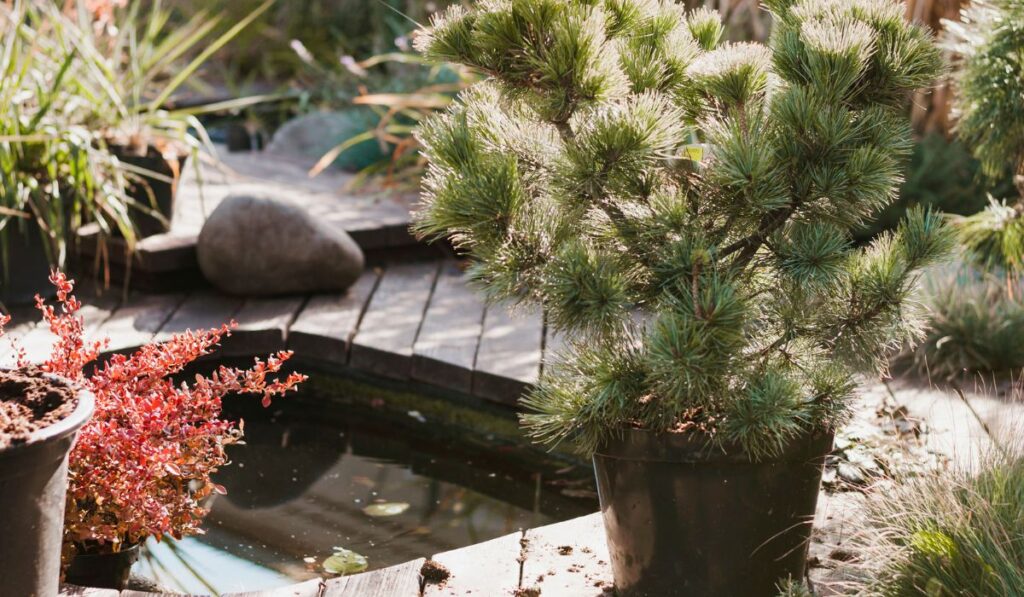
In the world of landscaping, evergreens are akin to the steadfast friends who stand by you year-round, irrespective of the season. They provide a constant splash of color when the rest of your garden has succumbed to the winter chill.
At DK Landscaping, we understand that choosing the right evergreens is crucial to ensuring your garden remains vibrant and dynamic throughout the year. Here’s a comprehensive guide to help you with your evergreen landscaping projects.
Understand Your Landscape’s Needs
Before diving into the plethora of evergreen landscaping options, it’s essential to assess the specific needs of your landscape. Consider the following:
- Climate Zone: Evergreens vary in their hardiness. Ensure the species you choose can thrive in your area’s climate.
- Soil Type: The success of an evergreen largely depends on the soil it’s planted in. Know your soil type and choose plants that will flourish in those conditions.
- Space and Size: Account for the mature size of the evergreen to ensure it fits well in your space without overcrowding.
- Sunlight: Some evergreens prefer full sun, while others thrive in partial shade. Understand the sunlight patterns in your landscape to make an informed choice.
Types of Evergreens
Evergreens come in various forms – trees, shrubs, and groundcovers. Each brings its unique aesthetic and functional qualities to your landscape.
Evergreen Trees
- Spruce (Picea spp.): With their classic Christmas tree shape, spruces are a popular choice. They offer dense foliage and can act as excellent windbreaks or privacy screens.
- Pine (Pinus spp.): Pines are known for their long, slender needles and are often used for their fast growth and stately appearance.
- Cedar (Cedrus spp.): Cedars are valued for their distinctive, often aromatic wood and rugged, shaggy appearance, adding a rustic charm to the landscape.
Evergreen Shrubs
- Boxwood (Buxus spp.): Boxwoods are versatile shrubs, perfect for creating hedges or topiaries. They’re known for their dense, bright green foliage and ease of maintenance.
- Rhododendron (Rhododendron spp.): Besides evergreen foliage, rhododendrons offer spectacular blooms, adding a splash of color to your garden in the spring.
- Holly (Ilex spp.): With their glossy leaves and bright red berries, hollies are both beautiful and great for attracting wildlife.
Evergreen Groundcovers
- Juniper (Juniperus spp.): Junipers are low-maintenance groundcovers that provide excellent erosion control on slopes and add texture to the landscape.
- Creeping Phlox (Phlox subulata): While not evergreen in the traditional sense, creeping phlox offers early spring flowers and retains its needle-like leaves year-round.
- Pachysandra (Pachysandra terminalis): This groundcover thrives in shaded areas where other plants struggle, providing a lush, green carpet.

Aesthetic Considerations
Evergreens are not just about green. They come in a spectrum of colors – from the blue-green hues of the blue spruce to the golden tips of the ‘Sunshine’ ligustrum. The texture of the foliage can also vary greatly, from the soft, feathery fronds of a fern pine to the rigid, needle-like leaves of a holly.
When selecting evergreens, consider how their color, texture, and form will complement your existing landscape. Think about how they will look during different seasons and at various times of the day.
Practical Considerations
Beyond aesthetics, evergreens serve practical purposes in a landscape:
- Privacy: Tall evergreens like arborvitae or clumping bamboo can create a natural privacy screen.
- Windbreaks: Dense evergreens can protect your home and garden from harsh winds.
- Sound Barrier: The thick foliage of evergreens can help reduce noise pollution.
- Wildlife Habitat: Many evergreens provide shelter and food for birds and other wildlife.
Evergreen Maintenance and Care
While evergreens are generally low-maintenance, they do require some care:
- Watering: Newly planted evergreens need regular watering until they’re established. Even drought-tolerant varieties may need extra water during prolonged dry spells.
- Pruning: While most evergreens require little pruning, some may benefit from occasional trimming to maintain shape and health.
- Pest and Disease Management: Be vigilant about pests and diseases. Early detection and treatment can prevent serious damage.
Making the Choice is Ultimately Up to You
When choosing evergreens for your landscape, it’s not just about picking a plant; it’s about creating an ambiance, fulfilling practical needs, and ensuring the overall health and beauty of your garden. At DK Landscaping, we believe that with the right knowledge and a thoughtful approach, you can transform your landscape into a year-round haven of tranquility and beauty.
For More Evergreen Landscaping Ideas, Contact DK Landscaping
Selecting the right evergreens is a nuanced process that involves understanding your landscape’s specific needs, the unique characteristics of different evergreens, and how they fit into the broader aesthetic and practical context of your garden. With careful consideration and a strategic approach, you can ensure that your landscape remains vibrant and dynamic throughout the year, offering a serene and inviting outdoor space that reflects your personal style and meets your practical needs.
Remember, your landscape is a living, evolving canvas, and the evergreens you choose are the strokes that define its character and beauty across seasons. Contact DK Landscaping now for help with your evergreen landscaping projects!
Tips to Get Gardens Ready for Winter
With the year slowly coming to an end and winter quickly approaching the outdoors can turn into a dull and inhospitable place forcing most people to remain indoors however, for garden and landscape enthusiast alike this time of year is the ideal time to prep gardens, lawns and surrounding landscapes for the upcoming growing season.
Keep Gardens in Shape During Winter

In the fall or just before winter most trees lose their foliage however at this time maintenance practices like pruning or trimming are encouraged during the latter months of the year as during this time of dormancy the majority of hedges, shrubs and trees can be pruned or trimmed without causing damage to the plant or tree.
This practice not only eliminates dead cumbersome branches from trees and plants but it also helps to improve their growth and shape while maintaining the general health of gardens.
As for the multitude of leaves that constantly fall and cover gardens at this time of year making it a practice to regularly clean gardens is extremely important as it allows garden beds and lawns to receive adequate sunlight which helps to promote optimal growth and health.
Another very important factor that gardeners should consider when preparing gardens for winter is the protection of plants from potential damage or destruction. Given the extreme conditions that come along with winter one clever tip that has proven to be an effective approach for protecting gardens during this extreme period is mulching.
Mainly used to help soil to retain moisture, regulate soil temperature and suppress weed growth mulching is also a great way to shield and protect plants against the hostile conditions of winter. Planting beds should be mulched at a depth of 1.5 – 2 inches to ensure plant roots remain the right temperature as well as to offer the right amount of protection from any potential damage.
Contract a Professional Landscaping Service
Not everyone may have the equipment to carry out trimming and pruning effectively and as for large, dead, trees and decayed branches hanging around gardens it’s best to contract trained professionals to manage tasks such as these since decayed trees and branches can pose serious threats of injury. Therefore contracting a professional landscaping service to manage tasks that might require equipment and trained personnel is the safest option.
Need Help with Preparing Your Garden for Winter?
Here at DK Landscaping Inc. we understand how tedious it can be to manage gardens on your own however we like to say that “We like Jungles” and we’d be happy to come in and assist you with all your garden preparations for winter.
We aim to provide the highest quality landscaping and gardening services to all clients. Our services are very affordable and we work with clients to manage any type of surroundings. Give us a call at: 707 217-6508 or visit our website: dklandscaping.com for more information.


